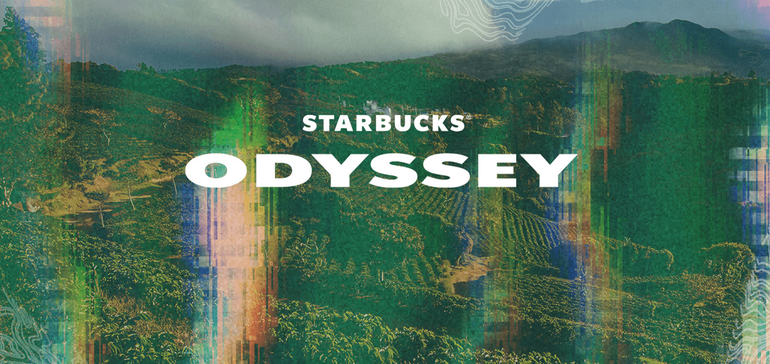The hype and price bubble for nonfungible tokens may already have peaked, but the more interesting and enduring business uses have just begun.
NFTs have upended the art world: Beeple’s Everydays: The First 5000 Days sold for $69 million, and Bored Apes have become a new status symbol to adorn social media profiles and metaverse avatars. Sports organizations have started to embrace NFTs as a way to deepen fan engagement, from the NBA’s Top Shot for trading video highlights to the Australian Open minting NFTs for each small square of the tennis court. With the latter, holders receive key video replays for those squares, and even the ball itself in the case of a championship shot. The bid price for the NFT where champion Rafael Nadal’s winning shot landed promptly surged more than 4,000%.
Do some of these investments constitute a bubble that depends on a “greater fool” coming along to buy the next one? Business luminaries such as Warren Buffett and Bill Gates believe so and disparage the rush to speculate in cryptocurrencies.
But set aside the wild spending on JPEGs of art, sports, and entertainment for a bit, as well as the recent crash in cryptocurrency prices. More relevant and promising for consumer businesses are the underlying technologies. NFTs provide an ideal set of capabilities to reimagine how companies engage their customers, not only in rewards and loyalty programs but also in other creative ways.
Skeptics should keep in mind that the first NFTs appeared in 2014 and the first NFT standards were proposed in 2017, so the whole enterprise might be just 1% complete, like the ride-on-demand concept was before reservation, mapping, payment, and rating functions were combined into one mobile app. The opportunities are nascent but real.
Think of an NFT as a programmable digital ticket that gives someone trackable, verifiable, tradable rights to an asset. The owner can add more content to it over time, and the NFT creator can govern its behavior with rules designed in advance. This opens up many possibilities for innovative ways to engage and reward customers, because NFTs are uniquely game-able, stackable, tradable, and programmable.
Game-able: NFTs can easily turn into a “loot box” full of consumable virtual items, to use the gaming term. A certain set of activities may be guaranteed to earn the consumer a reward with a minimum value, but how much else is in the loot box varies. For instance, after 10 purchases, flights, or hotel stays, the consumer earns an NFT redeemable for a gift. Some share of the firm’s customers might also randomly earn a shopping spree, a seat upgrade, or a bottle of wine at check-in.
Stackable: NFTs can have content subsequently attached to verify participation and capture the memory. One reward on a dining platform might consist of an upgrade to the chef’s table, and the NFT could have the menu and a picture of the party with the chef attached to it as a keepsake.
Tradable: It’s easy to share NFT-based rewards with friends and family, for a group to collectively save for a group experience, or for a timeshare owner to trade their weeks at a vacation condominium.
Programmable: If the business wants to impose a small trading fee on any sale, it can. If it wants the reward to expire on a certain date, or provide a richer benefit at off-peak times, that can be included up front in the smart contract.
While experimental buds are blooming, many components of a robust NFT system have not yet developed, limiting mainstream adoption. Three areas in particular need attention, though these will not be impediments for long.
The user experience is still clunky. Users need to purchase cryptocurrency on an exchange, move that crypto over to a self-custody wallet, connect the wallet to an application, and then engage with marketplaces and smart contracts that leave little room for error. That’s three apps required, each with their own learning curve. Adoption will take off once the user experience is simple enough that every transaction can be easily completed in a single wallet with no jargon or technical requirements, and users experience fewer hacking risks and less hassle with activities like recovering an account.
Nascent regulations have not standardized. Uncertainty about laws and regulation of NFTs remains. However, the U.S. Treasury Department has already published a fact sheet outlining how it would work with foreign regulators (who in several jurisdictions are more advanced than the U.S.) to address the risks and harness the potential benefits of digital assets and their underlying technology.
High transaction (“gas”) fees and a large carbon footprint plague NFTs. Both problems stem from intensive computer server use to mine cryptocurrencies through the proof-of-work process. These concerns will be addressed by Ethereum’s recent upgrade and could shift the chain’s consensus mechanism to proof of stake, which would almost entirely alleviate the carbon footprint issue. Other blockchains exist where users can mint NFTs without engaging in energy-intensive proof-of-work mining.
Mainstream use of NFTs is within sight. We view tickets for events such as the 2024 Olympics—which is considering using NFTs—as the gateway to broader adoption and relevance.
Traditional points-based reward and loyalty programs have had a good run in the airline, credit card, and other consumer industries. They’re not dead, but companies such as Amazon and Rakuten have already demonstrated more powerful models.
If we were to start with a blank slate for a new loyalty program, it wouldn’t resemble the old points-based system. Embracing NFTs with solid business outcomes in mind will power a whole new wave of innovation in customer loyalty. NFTs will also make it easier for brands in a wide range of industries to stay memorable with consumers through far more effective two-way engagement.
Gerard du Toit, Alexander Mitscherlich, Nikhil Ojha, and Kelly Pu are partners with Bain & Company. Bain & Company is a partner of Fortune’s Breakthrough series.
Sign up for the Fortune Features email list so you don’t miss our biggest features, exclusive interviews, and investigations.
© 2022 Fortune Media IP Limited. All Rights Reserved. Use of this site constitutes acceptance of our Terms of Use and Privacy Policy | CA Notice at Collection and Privacy Notice | Do Not Sell My Personal Information | Ad Choices
FORTUNE is a trademark of Fortune Media IP Limited, registered in the U.S. and other countries. FORTUNE may receive compensation for some links to products and services on this website. Offers may be subject to change without notice.
S&P Index data is the property of Chicago Mercantile Exchange Inc. and its licensors. All rights reserved. Terms & Conditions. Powered and implemented by Interactive Data Managed Solutions.


